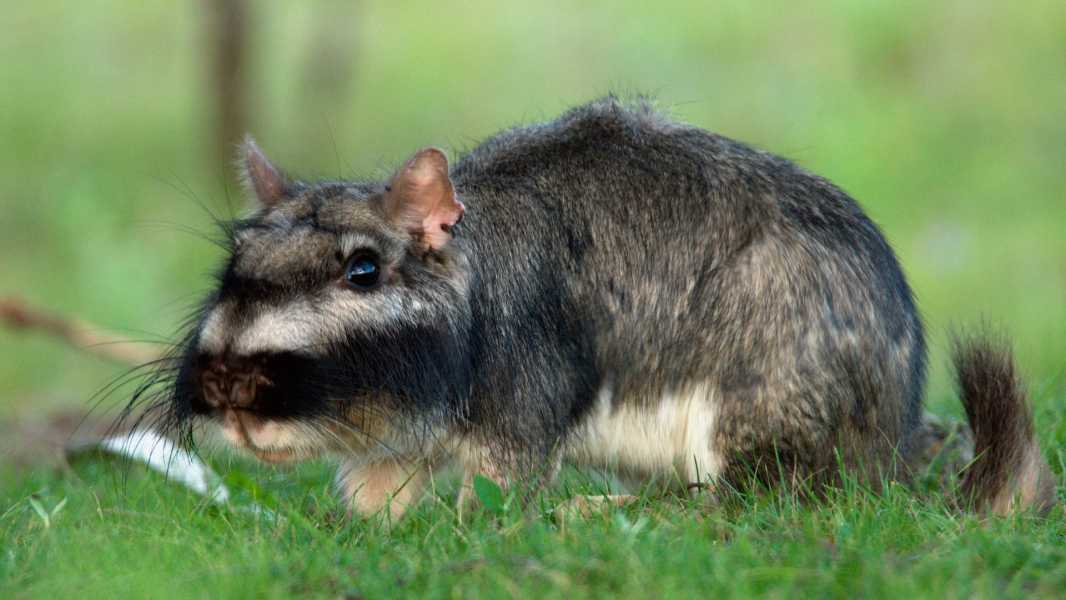
The plains viscacha, found in the vastness of South America, is distinguished by its pointed nose, stiff whiskers and two black stripes on its face. (Image credit: Cavan Images via Alamy)
On the vast plains of South America, a plump rodent reigns in a vibrant, hierarchical world underground. The plains viscacha, a robust relative of the chinchilla, creates underground “cities” known as viscacheras where up to 50 individuals can live. With tunnels reaching 10 feet (3 meters) deep, these complex networks of dark rooms and hidden exits impressed Charles Darwin during his travels through the region in the 19th century.
These underground builders are thought to live for up to eight years. The creatures are organized into complex colonies and are partly controlled by the viscacho, the oldest and most experienced male, who signals the end of the day each evening. At dusk, the viscacho is the first to go on guard. If all is quiet, he signals and the rest of the group follows.
The name “viscacha” comes from the Quechua word “wisk'acha,” a term that imitates the sound the animal makes. It has a broad head, large eyes, and pointed ears, as well as long, stiff whiskers; short front legs with strong claws for digging and longer back legs for jumping; and a short, bushy tail. Its grayish fur—darker on its back and lighter on its belly—and two black stripes running from its muzzle past its eyes give it a distinctive appearance.
However, its appearance is not the only thing that attracts attention; this rodent has set a record among mammals: a female viscacha can lay up to 326 eggs in a single reproductive cycle, making her the most prolific ovulator ever recorded among mammals, according to a study published in the Journal of Experimental Zoology – A.
Viscachas breed in the fall, when females go into heat and males compete fiercely — sometimes even fighting — for the opportunity to mate. Mating occurs inside a burrow, and after a five-month pregnancy, the female usually gives birth to two young.
Even more astonishing is how viscacha manages to pull this process off: a rare dual mechanism combines spontaneous ovulation, which can help eliminate defective eggs, with induced ovulation, which is triggered by hormones or seminal plasma to ensure that the highest quality eggs are fertilized.
TOPICS amazing animals

Maria de los Angeles Orfila Social Links NavigationLiving Scientific Contributor
María de los Ángeles Orfila is a science journalist based in Montevideo, Uruguay, known for her in-depth articles published in El País and El Observador. She was also a participant in The Open Notebook’s Sharon Dunwoody 2023 Mentorship Program and has written for Science, Scientific American, and Discover Magazine, among other publications.
You must verify your public display name before commenting.
Please log out and log back in. You will then be prompted to enter a display name.
Log out
Sourse: www.livescience.com





